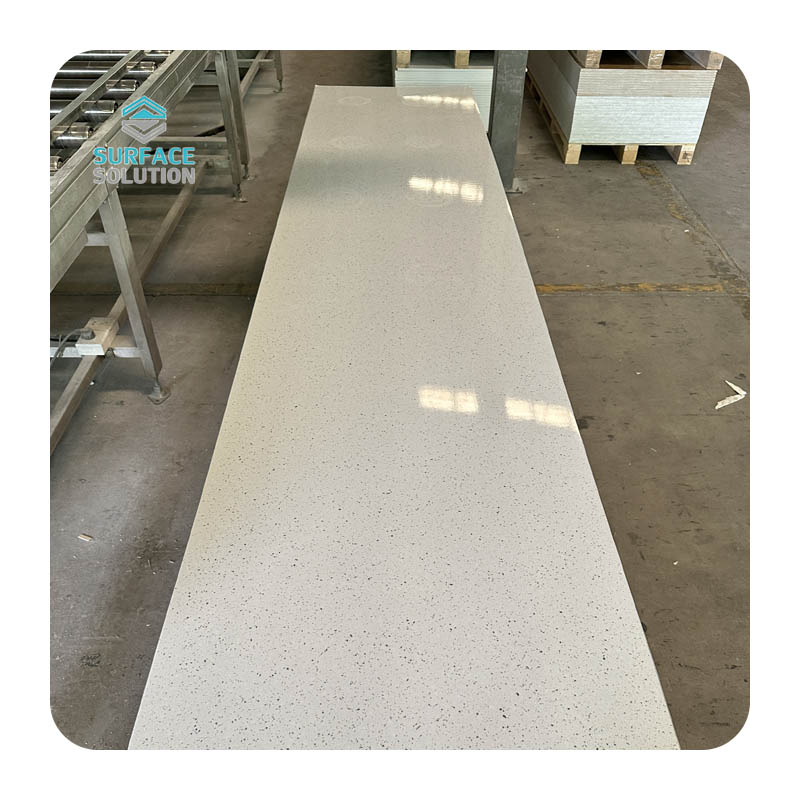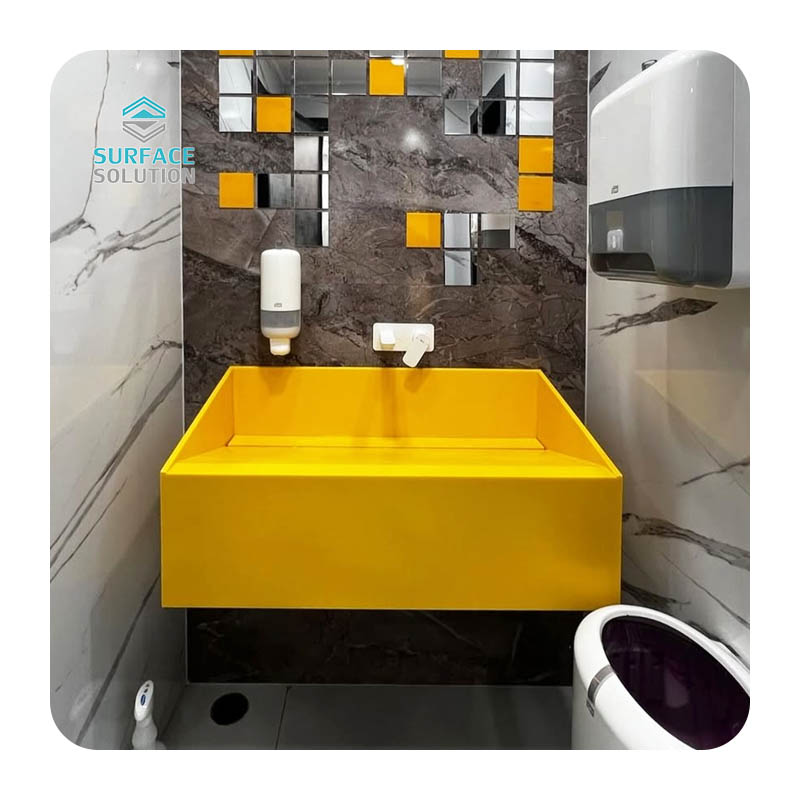When choosing between acrylic solid surface material and granite for countertops, the decision hinges on balancing aesthetics, durability, maintenance, and budget. Here’s a detailed comparison to help you make an informed choice.
Acrylic Solid Surface: Engineered from a blend of acrylic polymers (30%+ in pure acrylic) and natural minerals like aluminum trihydrate . This non-porous, homogeneous material allows for seamless seams and moldable designs .
Granite: A natural igneous rock formed from quartz, feldspar, and mica. Its dense, crystalline structure gives it inherent strength but also introduces natural variations in color and texture .
Acrylic: Offers unmatched design flexibility. It mimics natural stone patterns or provides solid, uniform colors, with options ranging from matte to high gloss. Seams are nearly invisible, ideal for modern, sleek spaces .

Granite: Boasts unique, organic beauty. Each slab has distinct veining and color gradients, adding a timeless, luxurious feel. However, its natural variations mean exact replication is impossible .
Acrylic:
Strength: While softer than granite (Mohs hardness 2-3 for standard acrylic, up to 7-8 with surface hardening ), it resists scratches better than laminate. Light scratches can be buffed out .
Heat Resistance: Tolerates up to 80-100°C (176-212°F), but prolonged exposure to direct heat (e.g., hot pans) may cause warping. A Class-A fire rating (ASTM E84) means it resists ignition and flame spread .
Impact Resistance: More flexible than granite, reducing the risk of cracking under sudden blows .
Granite:
Strength: Extremely hard (Mohs 6-7), making it highly scratch-resistant. Knives won’t damage the surface, but heavy impacts can cause chipping or cracking .
Heat Resistance: Withstands high temperatures (up to 600°C/1112°F) without damage, ideal for placing hot cookware directly on the surface .
Impact Resistance: Brittle by nature; sudden force may lead to cracks .
Acrylic:
Stain Resistance: Non-porous surface repels liquids like oil, coffee, and wine. Wipe clean with soap and water .
Repairability: Deep scratches, burns, or stains can be sanded and polished back to new .
Longevity: Lasts 10-15 years with proper care. UV-resistant coatings (optional) prevent yellowing over time .
Granite:
Stain Resistance: Porous nature requires annual sealing to prevent oil and liquid penetration. A water bead test determines if resealing is needed .
Cleaning: Use pH-neutral cleaners to avoid etching. Avoid abrasive scrubbers .
Longevity: Durable for decades if maintained. Natural resistance to bacteria and mold .
Acrylic:
Initial Cost: Mid-range to premium. Pure acrylic (e.g., Corian) costs $50-100+ per linear foot, while composite acrylic starts at $30-60 per linear foot .
Installation: Lower labor costs due to easier cutting and seamless integration.
Granite:
Initial Cost: Varies widely. Basic granite slabs start at $40-60 per square foot, while exotic or imported varieties can exceed $100 per square foot .
Installation: Higher labor costs due to the weight and precision required for cutting and sealing .
Acrylic:
Manufactured with synthetic materials, which may release VOCs during production. However, some brands use recycled content and offer eco-friendly certifications .
Non-toxic and food-safe (EU10/2011 compliant), making it suitable for food preparation areas .
Granite:
Natural and renewable, but mining can cause habitat disruption. Some granite contains low-level radiation, requiring testing before indoor use .
Zero VOC emissions and recyclable at end-of-life .
Acrylic:
Kitchens: Ideal for modern, high-traffic kitchens needing stain resistance and easy maintenance.
Bathrooms: Seamless sinks and countertops prevent water leakage.
Commercial Spaces: Durable for hotels, restaurants, and retail due to its repairability and design versatility .
Granite:
Kitchens: Perfect for traditional or luxury kitchens requiring heat resistance and a natural aesthetic.
Outdoor Areas: Resistant to weathering, suitable for patios and outdoor kitchens.
High-End Residences: Adds value and timeless appeal to homes .
Choose Acrylic If:
You prioritize customizable design, low maintenance, and moderate budget. It’s ideal for busy households or spaces where frequent repairs are impractical.
Choose Granite If:
You desire natural beauty, extreme durability, and don’t mind annual sealing. It’s a long-term investment for those seeking luxury and permanence.
Both materials excel in different contexts. Acrylic offers modern convenience, while granite delivers classic elegance. Assess your priorities—whether it’s cost, maintenance, or aesthetics—to make the right choice for your space.



 A Complete Guide to Solid Surface CountertopsSolid surface countertops are an increasingly popular choice for kitchens and bathrooms alike, thanks to their durability, versatility, and seamless aesthetic. This article dives deep into everything you need to know about solid surface countertops, inclu
A Complete Guide to Solid Surface CountertopsSolid surface countertops are an increasingly popular choice for kitchens and bathrooms alike, thanks to their durability, versatility, and seamless aesthetic. This article dives deep into everything you need to know about solid surface countertops, inclu The bathroom, a space blending functionality and relaxation, demands materials that can withstand moisture, daily use, and aesthetic expectations. Solid surface stone—encompassing natural stones (like marble, granite, and limestone), engineered stone (such as quartz composites), and acrylic solid su
The bathroom, a space blending functionality and relaxation, demands materials that can withstand moisture, daily use, and aesthetic expectations. Solid surface stone—encompassing natural stones (like marble, granite, and limestone), engineered stone (such as quartz composites), and acrylic solid su















